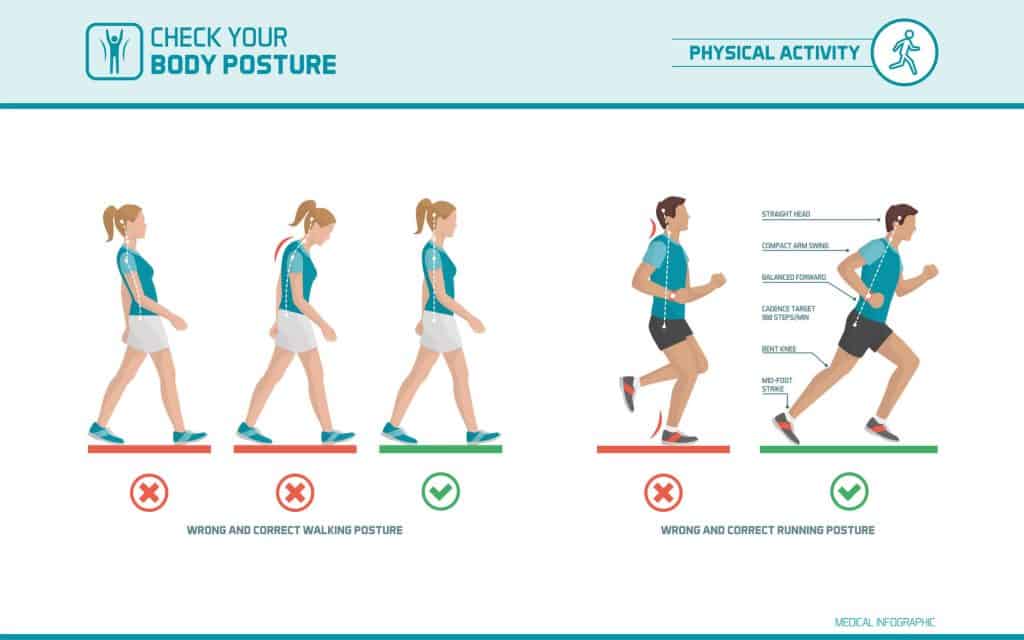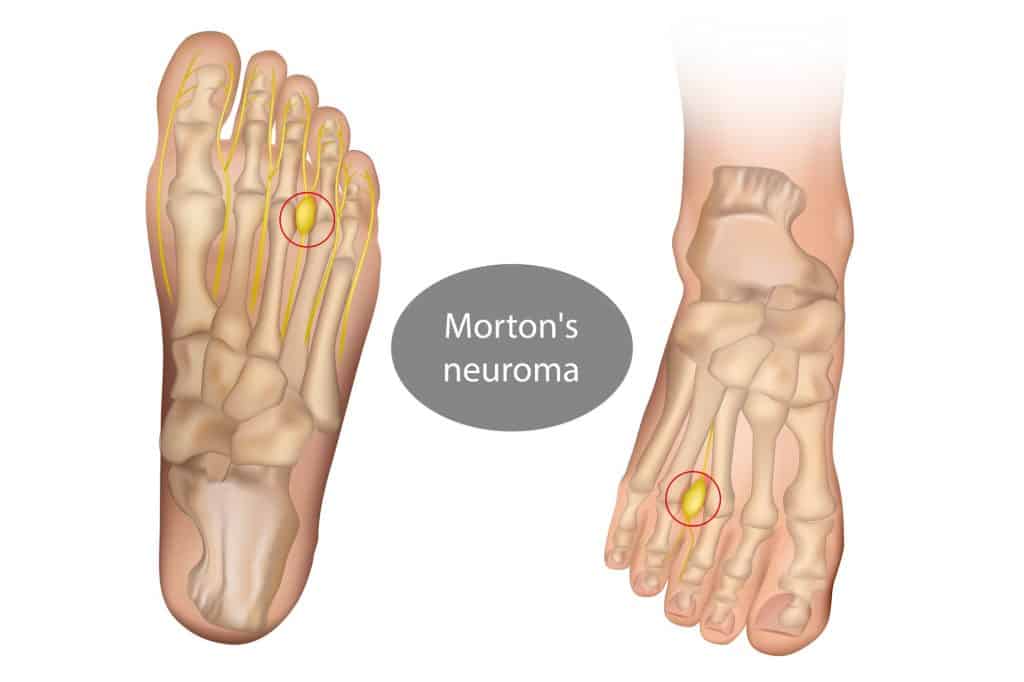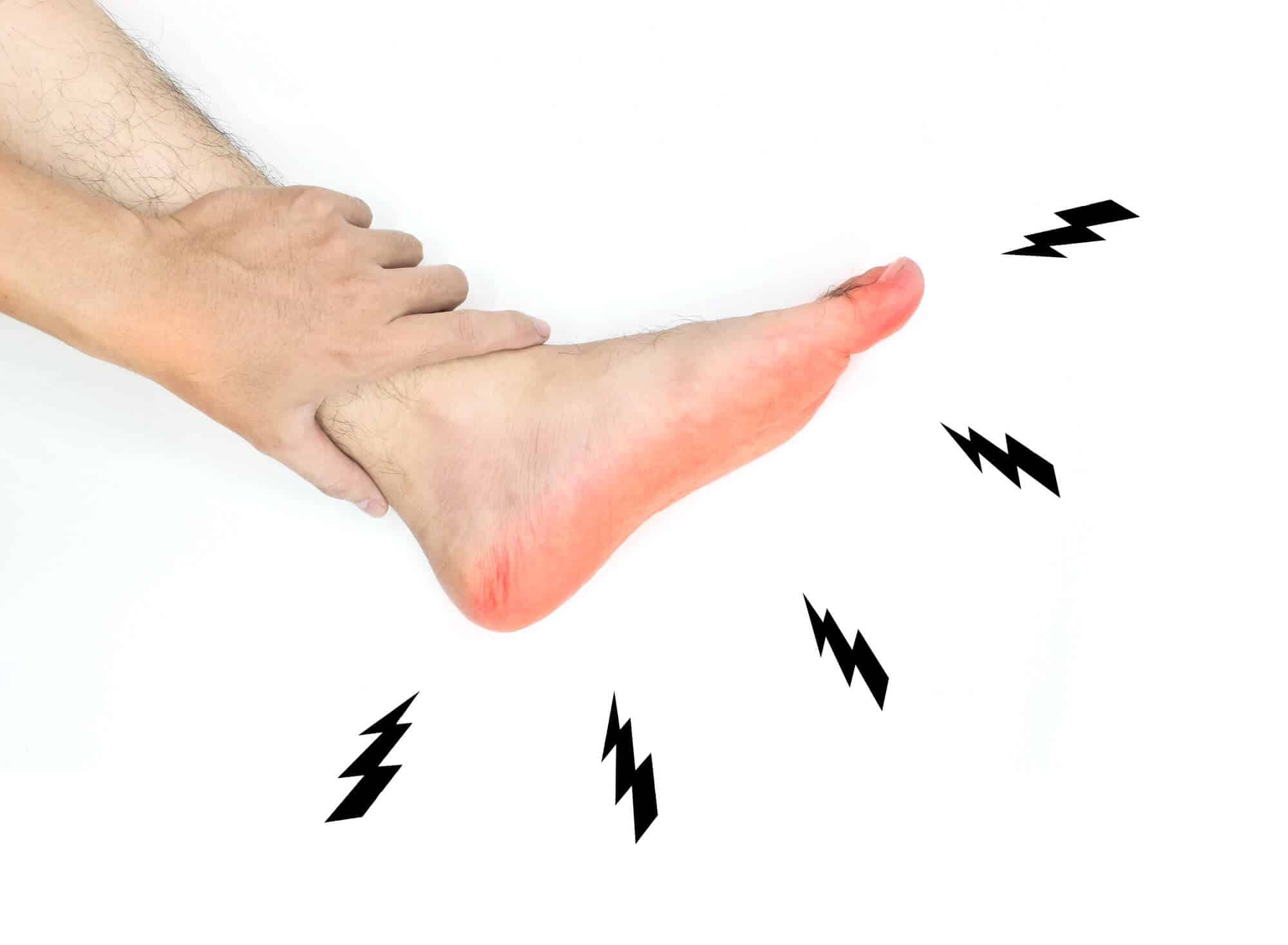Foot numbness is pretty common and even expected when we’re sitting on a desk for a long time.
However, having your feet fall asleep while running can be quite confusing, although it’s not as uncommon as you think!
So why do my feet go numb when I run? There are various reasons that cause feet to go numb while running.
These problems can be as simple as nerve entrapment, limited blood supply, or as serious as neuropathy and nerve damage.
If you want to find out more about the causes of foot numbness while running, keep on reading this guide.
Why Do My Feet Go Numb When I Run: 10 Reasons
To help you further understand the causes of foot numbness while running, here’s a brief overview of all the causes:
1. Poorly Fitting Shoes
While there are plenty of reasons why feet can go numb, poorly fitting shoes are easily the most common of all causes.
When you wear excessively tight shoes, nerve compression can occur due to the exerted pressure on the nerve endings in the feet.
Additionally, a shoe that is too tight to fit will also limit the blood supply to the nerves, which causes the sensation of pricks and needles while running.
Luckily, a poorly fitting shoe is also one of the simplest issues that you can fix almost immediately by changing into more suitable footwear.
Although most people take extra care while picking the length of the shoes, they often overlook their width.
Ideally, you need to buy running shoes with a relatively wide toe box and make a small wiggle room for added comfort.
According to a 2008 sports medicine study, our feet will slightly swell while running due to increased blood supply.
When this expansion is met with limited confinement, the nerves become pinched, causing numbness.
Ideally, good running shoes will let you have a small wiggle room in the toes area. Additionally, there should be extra space to fit one finger between your toes and the tip of the shoe.
A good buying tip here is to always go for a running shoe that is half a size larger than your everyday shoe.
2. Tight Shoe Laces
In some cases, you might buy a properly sized shoe and still feel numb while running. In that case, the shoelaces might be the culprit behind your numb foot, not your shoes.
A lot of runners will recommend pulling the shoelaces extra tight while running to prevent the feet from sliding around inside the shoe, which can trigger hot spots and blisters on insensitive feet.
Yet, excessively pulled laces can cause nerve compression that causes numbness in the toes, and you can easily test them out by loosening the laces and seeing if your feet are getting better.
If your shoelaces are the main offender here, try realigning your shoelaces pattern by skipping some laces holes so that they’re decently tight but not too much that they cause toe numbness.
3. Overuse Issues
Overuse issues are one of the most common problems among beginners as well as experienced runners.
However, when it comes to numbness while running, it’s more common among new runners.
A lot of beginner runners are excited about the exercise, which encourages them to push things beyond their limits.
This can happen by increasing the distance they run or by running at incredibly high speeds.
Overuse injuries are more likely to target joints and ligaments, but they can also cause swelling to the muscles of the feet, limiting the nervous blood supply.
When that happens, your feet’ numbness will build up quickly while running and last for long hours after the session due to swelling but will go away quicker by dipping your feet in relatively cold water for a few minutes.
If this happens to you, it’s better to ease off and work your way up in healthy increments to avoid the discomfort.
After all, running for 10 to 15 minutes every day is better than running 50 minutes on one day and resting for the rest of the week.
4. Problems with Running Form

You can also have a tingling sensation in your feet or a numb toe due to problems in your running form. Many of the issues in the case are related to overstriding, which is the running form in which you land on your heels rather than your entire midfoot.
When that happens, the blood vessels in the heel area are put under heavy pressure, which can trigger pinched nerve symptoms, such as tingling feet.
Overstriding is fairly common among runners who try to reach their maximum stride length, so it’s fairly mixed up with overuse issues. This means that you’re also risking various other problems while overstriding, such as shin splints, runner’s knee, and even hip injuries.
You can easily avoid overstriding while running by decreasing your stride length and focusing on landing specifically on your midfoot rather than your heels.
5. Foot Anatomy
The structure of your feet plays a major role in the way you run, especially when it comes to your foot arch type. Ideally, runners with flat feet are prone to a tingling sensation in the sole of their feet when they run.
This is because runners with flat feet land with the majority of their feet on the ground, which compresses a larger group of nerves and blood vessels, causing numbness in the feet while running.
In addition to runners with flat feet, those with extremely high arches can also feel a slight tingling in some parts of their feet because they land with a minimal portion on the ground, which puts that portion at immense pressure, and therefore, may cause tingling.
Running with problematic feet anatomy can also affect the way you run, putting you at risk of many different injuries in the joints.
For that reason, it’s important that you address that problem by wearing running shoes with proper arch support or orthotics that correct the points of stress and allow for moderate pressure distribution across the feet.
Physical therapy and strengthening the muscles of your feet can also improve your foot arch, which can also help in preventing numbness while running.
6. Sciatic Nerve Compression
The sciatic nerve is a major nerve that branches in the lower back and down the hips of each leg.
When the sciatic nerve is compressed, most cases report tingling or pain in the thighs or the back.
However, in rare cases, sciatica patients may also feel numbness in their feet and lower legs. Physical therapy and treatments prescribed by doctors may help in improving the condition.
7. Exertional Compartment Syndrome
Compartment syndrome is a condition in which a buildup of pressure increases between muscles, nerves, and blood vessels in the feet, causing numbness and loss of sensation for some time.
Luckily, the condition may subside with rest and physical rehabilitation, including stretching and massaging.
8. Morton’s Neuroma

Morton’s neuroma is a condition in which the fibers surrounding some of the nerves in your feet begin to thicken, which exerts extra pressure on the foot, causing tingling between the middle toes, especially the third and fourth.
The condition is more common among females and happens for various reasons, including wearing poorly fitting shoes, which is one of the reasons why buying proper running shoes is a must for runners.
This neuroma is often accompanied by pain, but the good news is that it’s curable. Your doctor may use steroid injections, heat pads, or surgery to address the problem depending on the condition.
9. Tarsal Tunnel Syndrome
Tarsal tunnel syndrome is quite similar to carpal tunnel syndrome which causes numbness in the wrist, except that this one targets the feet.
In this condition, the tarsal tunnel that houses all the blood vessels and nerves running down the ankle and towards the feet is compressed, causing a tingling sensation or frequent numbness.
10. Peripheral Neuropathy
Peripheral neuropathy usually happens as a result of nerve damage. It’s considered the most dangerous of all causes of numbness in the feet because it can be permanent if not properly addressed.
If your numbness doesn’t go away after resting, you must visit a doctor to make sure that you don’t suffer from any conditions that cause peripheral neuropathy
When Should I Be Concerned About Foot Numbness While Running?
As you can see, suffering from numb toes or tingling sensation while running is rarely a serious problem and can be easily corrected or solved using the previously mentioned tips in this guide.
Yet, in some cases, foot numbness can be a warning sign of a serious underlying condition that needs immediate medical intervention.
Here are some of the symptoms that you should be on the lookout for if you feel numbness in your feet while running:
- The tingling sensation is accompanied by pain in the midfoot or toes
- You’re suffering from high-risk conditions, such as diabetes or neuropathies
- The numbness isn’t subsiding when you stop running and continue for hours after resting
- The numbness is spreading across the legs
- You’re becoming disoriented or remarkably dizzy when you feel the numbness
- You have a previous serious foot injury or surgery
If you encounter any of the previously mentioned symptoms, you need to stop running and seek medical help immediately for diagnosis and treatment.
Final Words On Why Do My Feet Go Numb When I Run
There you have it! A brief guide with everything you need to know about foot numbness and why it happens while running.
As you can see, numbness in the foot is pretty common among people because it can happen due to a wide range of reasons, whether these causes are related to the nerves entrapment or limited blood supply to the feet while running.
Luckily, in most cases, foot numbness is not a serious issue. However, you must rule out neuropathies and other underlying conditions that might be causing this problem.

